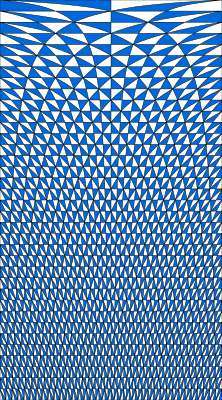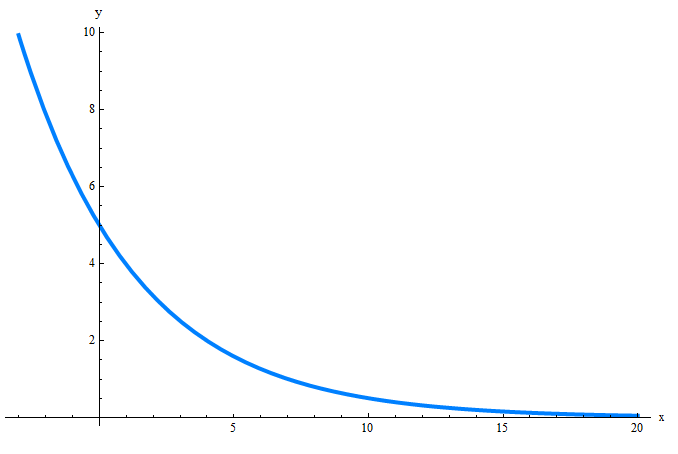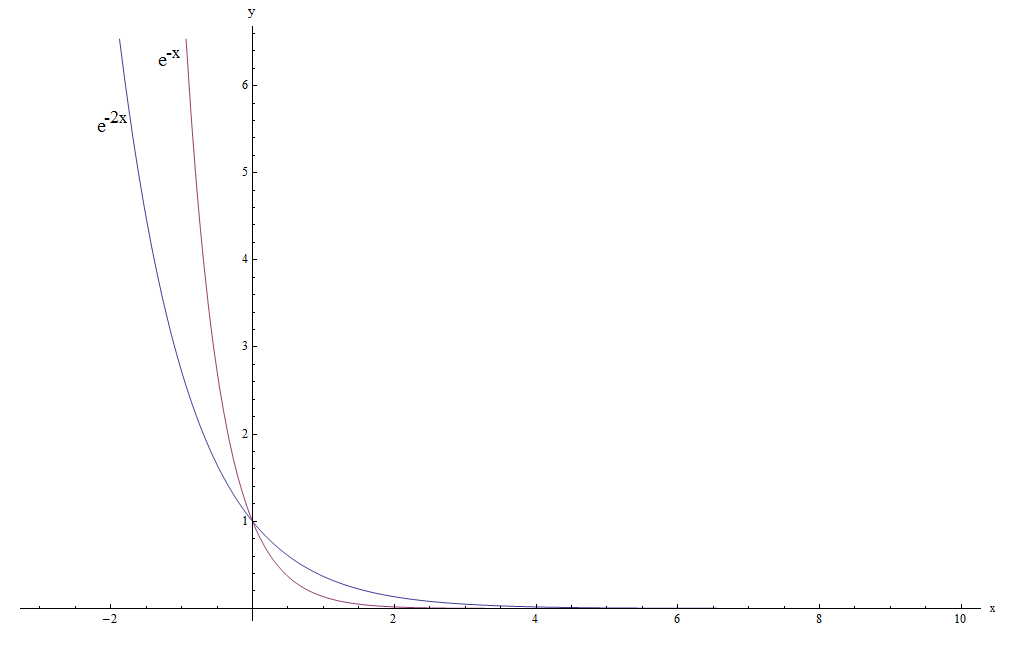二次函数化
指示: 使用这个二次元因式分解计算器,将一个二次元函数分解成两个单项式的乘积并表示出来,显示所有的步骤。请在下面的表格中输入你需要分解的二次函数。
一元二次方程的因式分解
这个计算器允许你计算你提供的二次方程的因子分解。你需要提供一个有效的二次函数,例如5/4 x^2 +3x +1,但你也可以提供一个没有完全简化的二次函数,例如2x^2 + 2x + 1/3 + 1/5 + 1/4 x,只要二次方程有效。
自然而然。 二次函数的因式分解 密切相关的是 解决一元二次方程 我们将看到,这些因子很容易包含二次方程的根。
实际上,寻找二次方程的根是典型的二次函数因子的最常见方法。另一种方法是使用有理零点法。

如何进行二次因式分解?
至少有两种系统的方法来处理一元二次方程的因式分解。最常见的方法之一是先找到一元二次方程的根的方法。
- 第1步:确定给定的二次函数,如有必要,可将其完全简化
- 第2步:确保函数的形式f(x)=ax²+bx+c
- 第三步:使用二次方程。\(x = \displaystyle \frac{-b \pm \sqrt{b^2 - 4ac}}{2a} \)找出根\(x_1\)和\(x_2\)。
- 第4步:因式分解 使用二次方程:f(x) = ax² + bx + c = a(x - x₁)(x-x₂)
- 第5步:无论根是否为实数,上述方法都有效。
因此,换句话说,二次方程的根就出现在单项式中。
如何进行有理数为零的二次方分解?
有理数零点是一个定理,它允许我们找到一个潜在的有理数候选者名单,这些候选者可能是一元二次方程的根,因此,它们可以被用来分解方程的因式。
有理零点定理的步骤是什么?
- 第1步:确定给定的二次函数,如有必要,可将其完全简化
- 第2步:确保函数的形式f(x)=ax²+bx+c
- 第三步:找到c和a的整数(正数和负数)除数,然后用c的每一个除数除以a的每一个除数。
- 第4步:浏览上面列表中的每个元素,并检查它们是否是给定的二次方程的根。
这种方法在大多数情况下是有效的,但只有在相应的 二次方程 有合理的根。
用因式分解法解决一元二次的问题
正如我们在上面看到的,通过因式分解解决二次函数与二次函数的因式分解紧密相关,事实上,它们是等同的过程。
事实上,如果我们已经成功地将一个二次函数分解成因子,那么我们只需简单地看一下单项式,就可以马上得到根。.
反过来说,如果我们已经找到了根,我们就知道因式分解是简单的a(x-x₁)(x-x₂)。

例子。因式分解法实例
因式分解。\(f(x) = x^2 - 3x - 5\)
解决方案:
我们得到了以下的二次函数表达式。\(\displaystyle x^2-3x-5\)。
在这种情况下,我们有,我们需要尝试的方程是\(\displaystyle x^2-3x-5 = 0\),这意味着相应的系数是。
\[a = 1\] \[b = -3\] \[c = -5\]现在,我们需要找到除\(a\)和\(c\)的整数,这些整数将被用来构建我们的候选因子。
\(a = 1\)的分割线是:\(a = 1\)。\(\pm 1\)。
\(c = -5\)的分割线是:\(c = -5\)。\(\pm 1,\pm 5\)。
因此,用\(c = -5\)的每个除数除以\(a = 1\)的每个除数,我们发现以下的候选因子列表。
\[\pm \frac{ 1}{ 1},\pm \frac{ 5}{ 1}\]现在,需要对所有的候选人进行测试,看他们是否是一个解决方案。以下是测试每个候选人得到的结果。
\[\begin{array}{cccccccc} x & = & \displaystyle -1 &:& & \displaystyle 1 \left(-1\right)^2-3 \left(-1\right)-5 & = & \displaystyle -1 \ne 0 \\\\ x & = & \displaystyle 1 &:& & \displaystyle 1 \left(1\right)^2-3 \left(1\right)-5 & = & \displaystyle -7 \ne 0 \\\\ x & = & \displaystyle -5 &:& & \displaystyle 1 \left(-5\right)^2-3 \left(-5\right)-5 & = & \displaystyle 35 \ne 0 \\\\ x & = & \displaystyle 5 &:& & \displaystyle 1 \left(5\right)^2-3 \left(5\right)-5 & = & \displaystyle 5 \ne 0 \\\\ \end{array}\]那么,没有一个候选者是根,因此,这种方法不能让我们找到因子。
使用二次方程
由于我们无法用潜在的有理数候选数找到根,所以我们只用二次方程。得到以下结果。
对于形式为\(a x^2 + bx + c = 0\)的二次方程,使用以下公式计算根。
\[x = \displaystyle \frac{-b \pm \sqrt{b^2-4ac}}{2a}\]在这种情况下,我们有,我们需要解决的方程是\(\displaystyle x^2-3x-5 = 0\),这意味着相应的系数是。
\[a = 1\] \[b = -3\] \[c = -5\]首先,我们将计算判别式以评估根的性质。判别式的计算方法是:。
因为在这种情况下,我们得到的判别式是\(\Delta = \displaystyle 29 > 0\),它是正的,我们知道该方程有两个不同的实数根。
现在,将这些数值插入到根的公式中,我们可以得到。
\[x = \displaystyle \frac{-b \pm \sqrt{b^2-4ac}}{2a} = \displaystyle \frac{3 \pm \sqrt{\left(-3\right)^2-4\left(1\right)\left(-5\right)}}{2\cdot 1} = \displaystyle \frac{3 \pm \sqrt{29}}{2}\]因此,我们发现。
\[ x_1 = -\frac{1}{2}\sqrt{29}+\frac{3}{2} \] \[x_2 = \frac{1}{2}\sqrt{29}+\frac{3}{2}\]因此,给定的方程\(\displaystyle x^2-3x-5=0\)有两个不同的实根,即\(x_1 = \displaystyle -\frac{1}{2}\sqrt{29}+\frac{3}{2}\)和\(x_2 = \displaystyle \frac{1}{2}\sqrt{29}+\frac{3}{2}\)。
因此,鉴于有两个实数根,给定的二次函数可以被分解为
\[ \displaystyle x^2-3x-5 = \displaystyle \left(x+\frac{1}{2}\sqrt{29}-\frac{3}{2}\right)\left(x-\frac{1}{2}\sqrt{29}-\frac{3}{2}\right)\]例子。二次方表达式的因式分解
计算以下的因式分解\( 3x^2 - 2x + 15\)。该因式分解是实数吗?
解决方案:
我们得到了以下的二次函数表达式。\(\displaystyle 3x^2-2x+15\)。
在这种情况下,我们有,我们需要尝试的方程是\(\displaystyle 3x^2-2x+15 = 0\),这意味着相应的系数是。
\[a = 3\] \[b = -2\] \[c = 15\]现在,我们需要找到除\(a\)和\(c\)的整数,这些整数将被用来构建我们的候选因子。
\(a = 3\)的分割线是:\(a = 3\)。\(\pm 1,\pm 3\)。
\(c = 15\)的分割线是:\(c = 15\)。\(\pm 1,\pm 3,\pm 5,\pm 15\)。
因此,用\(c = 15\)的每个除数除以\(a = 3\)的每个除数,我们发现以下的候选因子列表。
\[\pm \frac{ 1}{ 1},\pm \frac{ 1}{ 3},\pm \frac{ 3}{ 1},\pm \frac{ 3}{ 3},\pm \frac{ 5}{ 1},\pm \frac{ 5}{ 3},\pm \frac{ 15}{ 1},\pm \frac{ 15}{ 3}\]现在,需要对所有的候选人进行测试,看他们是否是一个解决方案。以下是测试每个候选人得到的结果。
\[\begin{array}{cccccccc} x & = & \displaystyle -1 &:& & \displaystyle 3 \left(-1\right)^2-2 \left(-1\right)+15 & = & \displaystyle 20 \ne 0 \\\\ x & = & \displaystyle 1 &:& & \displaystyle 3 \left(1\right)^2-2 \left(1\right)+15 & = & \displaystyle 16 \ne 0 \\\\ x & = & \displaystyle -\frac{1}{3} &:& & \displaystyle 3 \left(-\frac{1}{3}\right)^2-2 \left(-\frac{1}{3}\right)+15 & = & \displaystyle 16 \ne 0 \\\\ x & = & \displaystyle \frac{1}{3} &:& & \displaystyle 3 \left(\frac{1}{3}\right)^2-2 \left(\frac{1}{3}\right)+15 & = & \displaystyle \frac{44}{3} \ne 0 \\\\ x & = & \displaystyle -3 &:& & \displaystyle 3 \left(-3\right)^2-2 \left(-3\right)+15 & = & \displaystyle 48 \ne 0 \\\\ x & = & \displaystyle 3 &:& & \displaystyle 3 \left(3\right)^2-2 \left(3\right)+15 & = & \displaystyle 36 \ne 0 \\\\ x & = & \displaystyle -5 &:& & \displaystyle 3 \left(-5\right)^2-2 \left(-5\right)+15 & = & \displaystyle 100 \ne 0 \\\\ x & = & \displaystyle 5 &:& & \displaystyle 3 \left(5\right)^2-2 \left(5\right)+15 & = & \displaystyle 80 \ne 0 \\\\ x & = & \displaystyle -\frac{5}{3} &:& & \displaystyle 3 \left(-\frac{5}{3}\right)^2-2 \left(-\frac{5}{3}\right)+15 & = & \displaystyle \frac{80}{3} \ne 0 \\\\ x & = & \displaystyle \frac{5}{3} &:& & \displaystyle 3 \left(\frac{5}{3}\right)^2-2 \left(\frac{5}{3}\right)+15 & = & \displaystyle 20 \ne 0 \\\\ x & = & \displaystyle -15 &:& & \displaystyle 3 \left(-15\right)^2-2 \left(-15\right)+15 & = & \displaystyle 720 \ne 0 \\\\ x & = & \displaystyle 15 &:& & \displaystyle 3 \left(15\right)^2-2 \left(15\right)+15 & = & \displaystyle 660 \ne 0 \\\\ \end{array}\]那么,没有一个候选者是根,因此,这种方法不能让我们找到因子。
使用二次方程
由于我们无法用潜在的有理数候选数找到根,所以我们只用二次方程。得到以下结果。
对于形式为\(a x^2 + bx + c = 0\)的二次方程,使用以下公式计算根。
\[x = \displaystyle \frac{-b \pm \sqrt{b^2-4ac}}{2a}\]在这种情况下,我们有,我们需要解决的方程是\(\displaystyle 3x^2-2x+15 = 0\),这意味着相应的系数是。
\[a = 3\] \[b = -2\] \[c = 15\]首先,我们将计算判别式以评估根的性质。判别式的计算方法是:。
因为在这种情况下,我们得到的判别式是\(\Delta = \displaystyle -176 < 0\),它是负的,我们知道,给定的方程有两个不同的共轭复数根。
现在,将这些数值插入到根的公式中,我们可以得到。
\[x = \displaystyle \frac{-b \pm \sqrt{b^2-4ac}}{2a} = \displaystyle \frac{2 \pm \sqrt{\left(-2\right)^2-4\left(3\right)\left(15\right)}}{2\cdot 3} = \displaystyle \frac{2 \pm \sqrt{-176}}{6}\]因此,我们发现。
\[\displaystyle x_1 = \frac{2 - i \sqrt{176}}{6} = \frac{1}{3}-\frac{2}{3}\sqrt{11}\] \[\displaystyle x_2 = \frac{2 + i \sqrt{176}}{6} = \frac{1}{3}+\frac{2}{3}\sqrt{11}\]因此,给定方程\(\displaystyle 3x^2-2x+15=0\)有两个不同的共轭复数根,即\(x_1 = \displaystyle \frac{1}{3}-\frac{2}{3}\sqrt{11}\)和\(x_2 = \displaystyle \frac{1}{3}+\frac{2}{3}\sqrt{11}\)。
因此,鉴于有两个复数根,给定的二次函数有以下复数分解。
\[ \displaystyle 3x^2-2x+15 = \displaystyle 3 \left(x-\frac{1}{3}+\frac{2}{3}\sqrt{11}\right)\left(x-\frac{1}{3}-\frac{2}{3}\sqrt{11}\right)\]例子。如何解决一元二次方程
用因式分解法解决下面的一元二次方程。\( x^2 +3x +\frac{9}{4} = 0 \)。
解决方案:
我们得到了以下的二次函数表达式。\(\displaystyle x^2+3x+\frac{9}{4}\)。
在这种情况下,我们有,我们需要尝试的方程是\(\displaystyle x^2+3x+\frac{9}{4} = 0\),这意味着相应的系数是。
\[a = 1\] \[b = 3\] \[c = \frac{9}{4}\]现在,我们需要找到除\(a\)和\(c\)的整数,这些整数将被用来构建我们的候选因子。
\(a = 1\)的分割线是:\(a = 1\)。\(\pm 1\)。
系数\(c = \frac{9}{4}\)没有整数分割器。
因此,我们不能用这种方法来寻找因素。
使用二次方程
由于我们无法用潜在的有理数候选数找到根,所以我们只用二次方程。得到以下结果。
对于形式为\(a x^2 + bx + c = 0\)的二次方程,使用以下公式计算根。
\[x = \displaystyle \frac{-b \pm \sqrt{b^2-4ac}}{2a}\]在这种情况下,我们有,我们需要解决的方程是\(\displaystyle x^2+3x+\frac{9}{4} = 0\),这意味着相应的系数是。
\[a = 1\] \[b = 3\] \[c = \frac{9}{4}\]首先,我们将计算判别式以评估根的性质。判别式的计算方法是:。
因为在这种情况下,我们得到的判别式是\(\Delta = \displaystyle 0 = 0\),它是零,所以我们知道该方程只有一个实数根。
现在,将这些数值插入到根的公式中,我们可以得到。
\[x = \displaystyle \frac{-b \pm \sqrt{b^2-4ac}}{2a} = \displaystyle \frac{-3 \pm \sqrt{\left(3\right)^2-4\left(1\right)\left(\frac{9}{4}\right)}}{2\cdot 1} = \displaystyle \frac{-3 \pm \sqrt{0}}{2}\]因此,我们发现。
\[x = -\frac{3}{2}\]因此,给定方程\(\displaystyle x^2+3x+\frac{9}{4}=0\)只有一个实根,即\(x = \displaystyle -\frac{3}{2}\)。
因此,鉴于只有一个实数根,给定的二次函数可以被分解为
\[ \displaystyle x^2+3x+\frac{9}{4} = \displaystyle \left(x+\frac{3}{2}\right)^2\]更多二次元计算器
的重要性。 二次方表达式 这一点怎么强调都不为过。 解决一元二次方程 将成为你在各种应用中使用代数时最有力的工具之一。.
这 二次函数的图形 具有抛物线的形状,具有所有种类或显著的对称性,有一个 顶点 代表抛物线中 "支持 "它的一个显著的点,以及一个由它是向上还是向下打开定义的方向。




